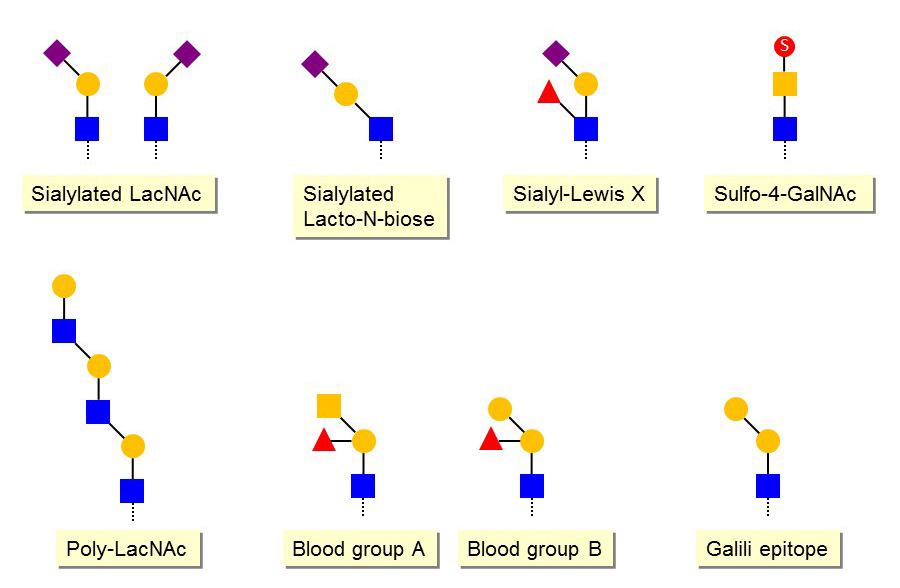Terminal epitopes of N-linked glycans
Sia, either through α2-3 or α2-6 linkage, is often found at the termini of of N-glycan and β1-4 linked Gal is typical as penultimate monosaccharide, thereby forming sialylated LacNAc. Gal can alternatively be β1-3 linked, yielding sialylated lacto-N-biose. Other typical terminal structures of N-glycans are fucosylated epitopes, such as the blood group A and B determinants and the sialyl Lewis-X antigen, which acts as ligand for selectin proteins. N-glycans can also carry long extensions of poly-LacNAc, so-called polylactosamine chains, which are mainly found on the MGAT5-mediated β1-6 branch. Terminal structures are not specific to N-glycans since most are also found on O-glycans and on glycosphingolipids. However, the sulfated-4-GalNAc epitope is indeed specific to the N-glycans of gonadotropin hormones and mediate essential signals to the function of these hormones (see below).
Figure 40. Typical terminal epitopes found on N-glycans. The Gal(α1-3)Gal terminus (Galili epitope) does not occur on human cells.
Some terminal structures like the Gal(α1-3)Gal Galili epitope are not found on human N-glycans, because the gene encoding the terminally acting α1-3 Gal-transferase is inactive in the human genome. Accordingly, humans have high titers of antibodies against the Galili epitope since it is commonly found on bacteria. The Galili epitope is also widespread on most mammalian cells and is therefore responsible for the hyperacute rejection of xenotransplanted mammalian organs in humans.
